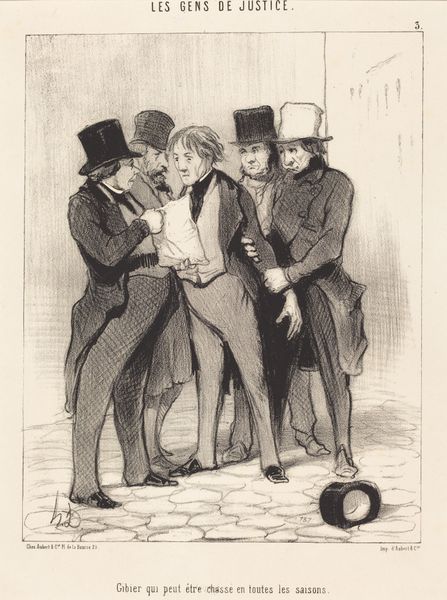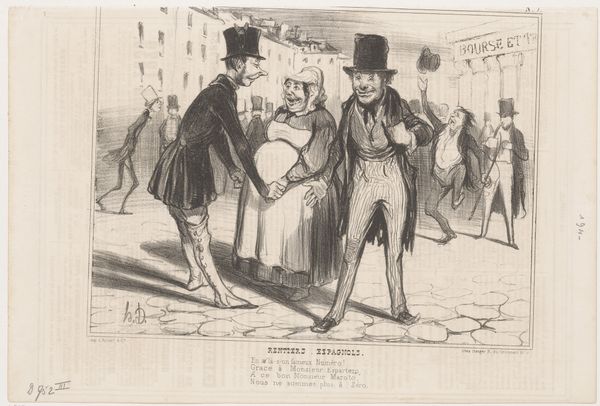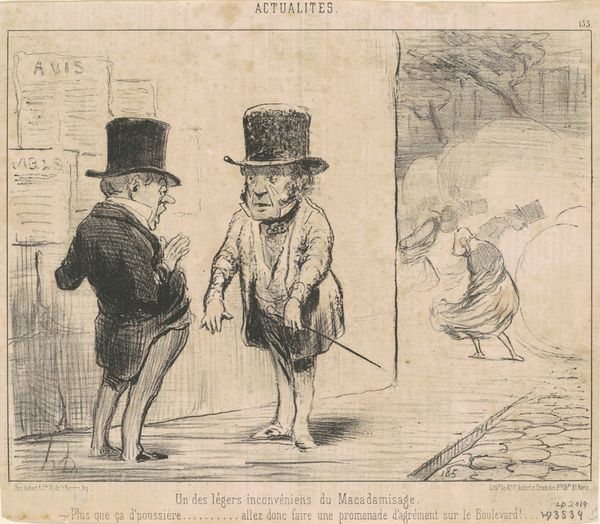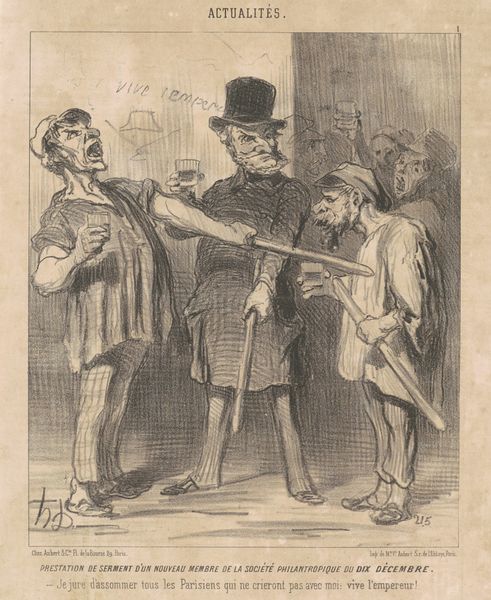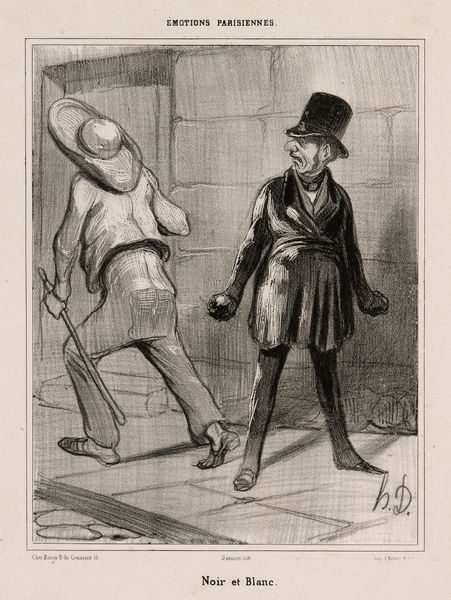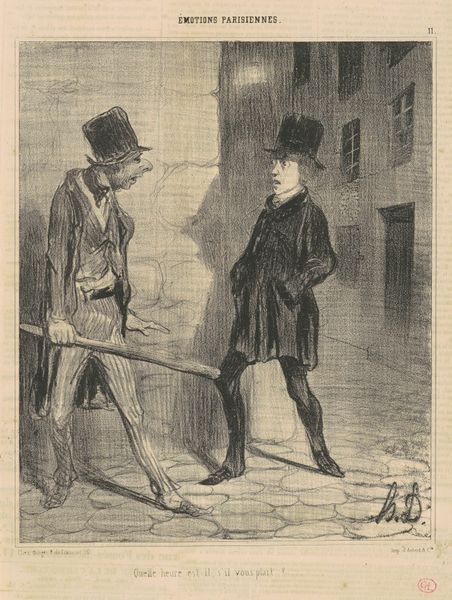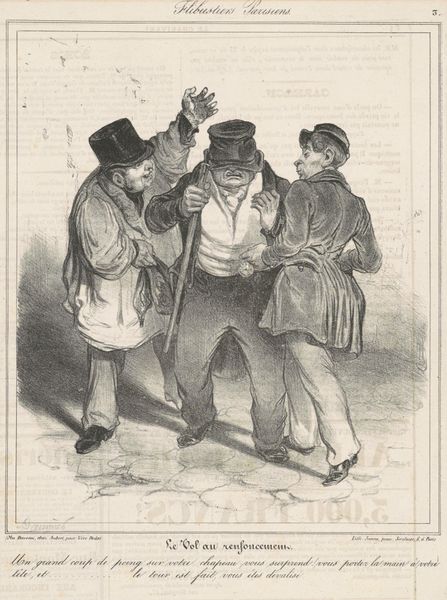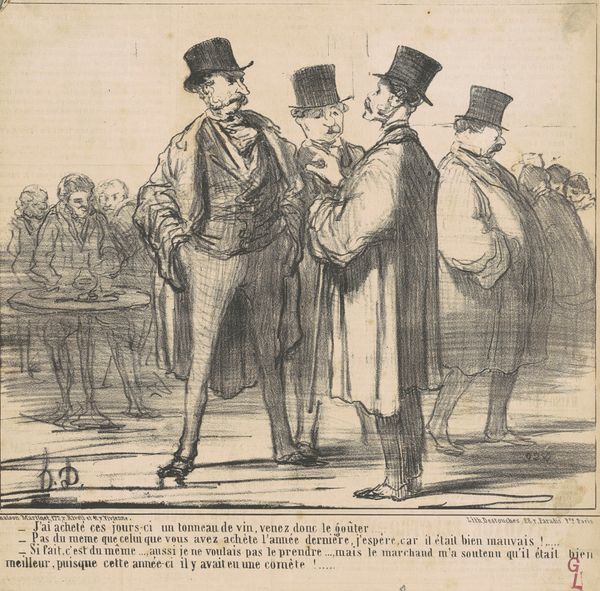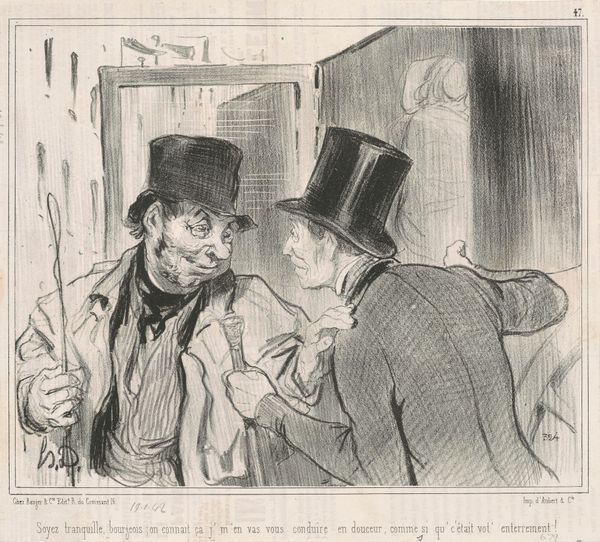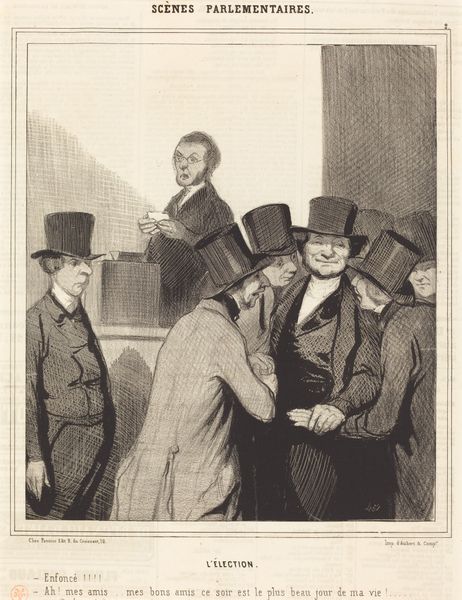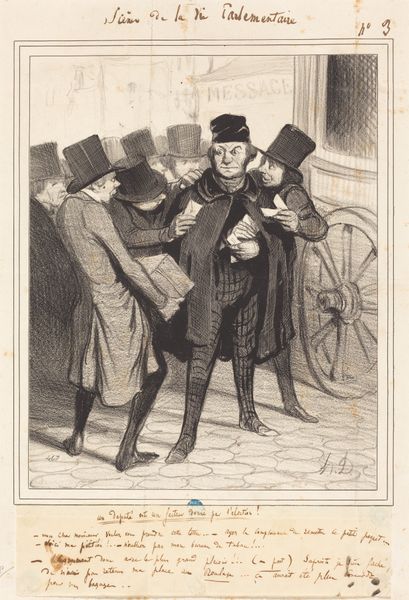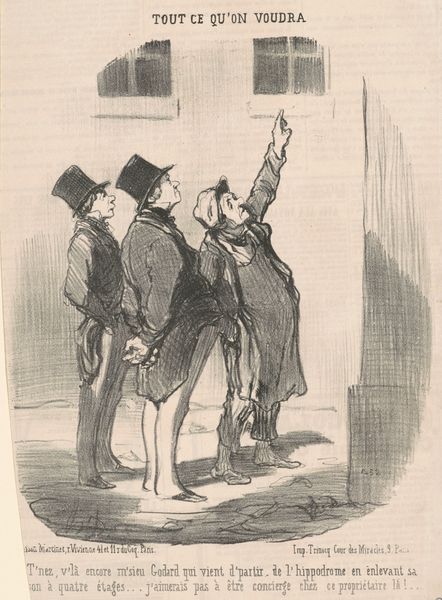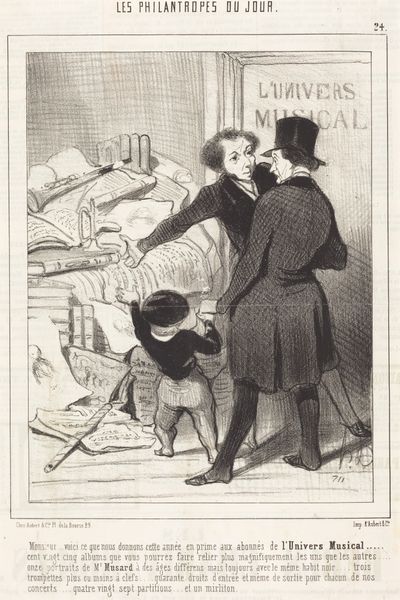
lithograph, print
#
lithograph
# print
#
caricature
#
romanticism
#
genre-painting
Copyright: National Gallery of Art: CC0 1.0
Curator: Isn’t it captivating? I am drawn to how Daumier’s lithograph, "Le M. de Chaines de Suretés", essentially titled The Safety Chain Man, from around the mid-19th century, encapsulates an entire Parisian drama within a single frame. Editor: Intriguing, certainly. The crowded street, the angular figures... it feels claustrophobic and slightly menacing. There's a tangible tension; like something is about to happen, but I'm not sure what. It has all the intimacy of standing in a large crowd. Curator: Precisely. Daumier excels at social commentary. What we see is the performance of "safety". Notice the faces – the intensity and slight contortions revealing more sinister intentions. It’s the "safety" of swindlers preying on the wealthy urbanite. He has made visible something that is almost never discussed, how those on the margins of society use artifice for personal gain. Editor: It seems incredibly modern, actually, even timeless. The hustle and the crowd seem to capture something really elemental about capitalism; somebody wins, and someone must lose. There is an interesting focus on their top hats – everyone in this image is seemingly obsessed with appearing upstanding. It seems like Daumier’s world is made of false faces. Curator: Indeed. Daumier was incredibly adept at highlighting social inequalities through satire. Here the figures press closely and the would-be victim doesn’t recognize his endangerment because those who threaten him look like his peers. He does not question them. Editor: Do you think this reflects a genuine anger about wealth disparity, or more of a detached observation? It is unclear if there is compassion, exactly. Maybe he, too, relishes their downfall, in some ways? Curator: I suspect it’s both. He documents injustices he himself lived through and witnessed; but like any good satirist, he also holds a mirror to the audience. Perhaps, he provokes a discomfort. Is that spectator next? Editor: So the cartoon reflects his engagement with, and critique of, that society? It makes me think differently about who that is a service for; for whom this lithograph was originally printed. Well, that's definitely given me something to ponder. Curator: A good ending indeed, perhaps all art should provide an active meditation, so to speak. Thank you for lending me your point of view.
Comments
No comments
Be the first to comment and join the conversation on the ultimate creative platform.
